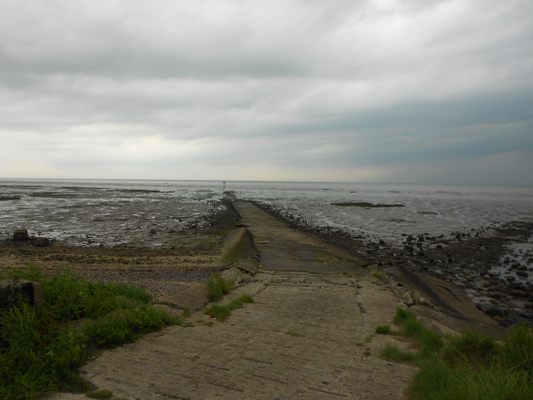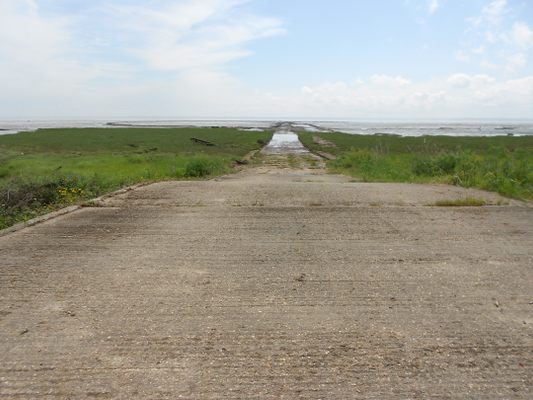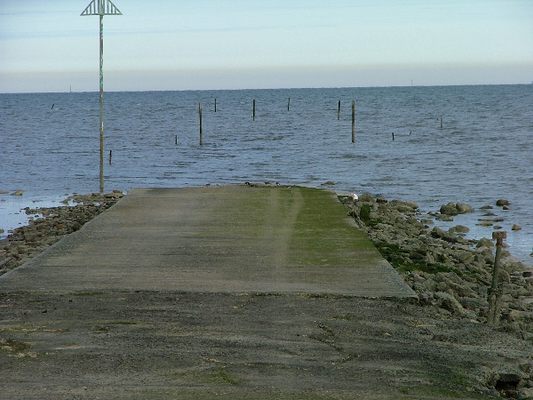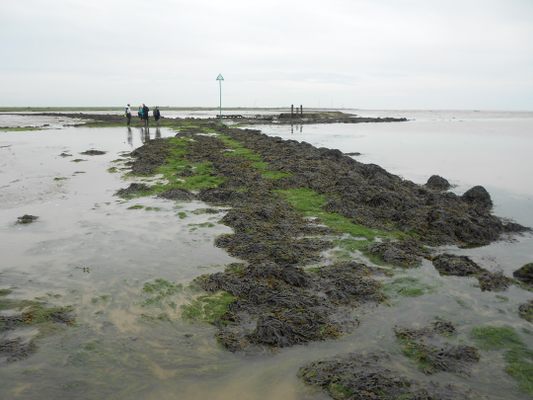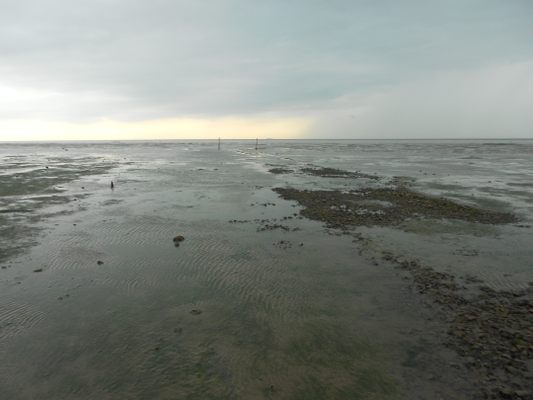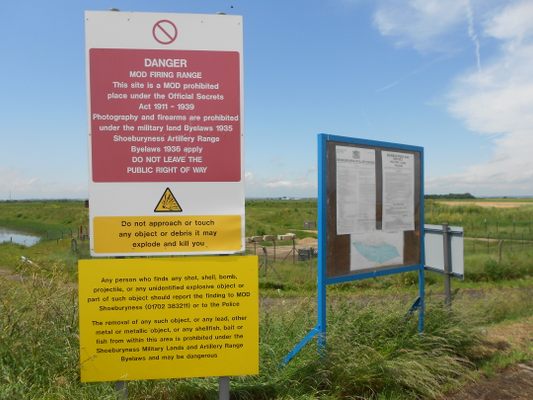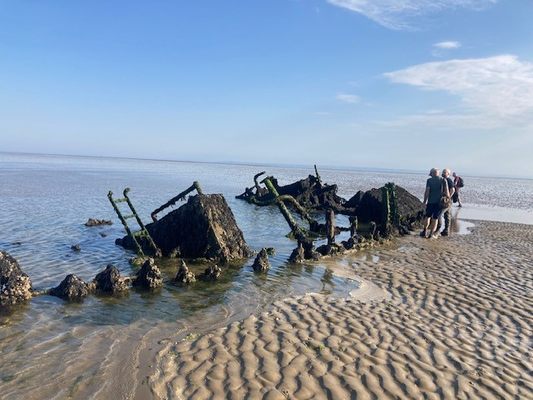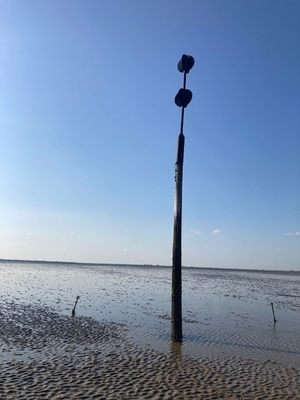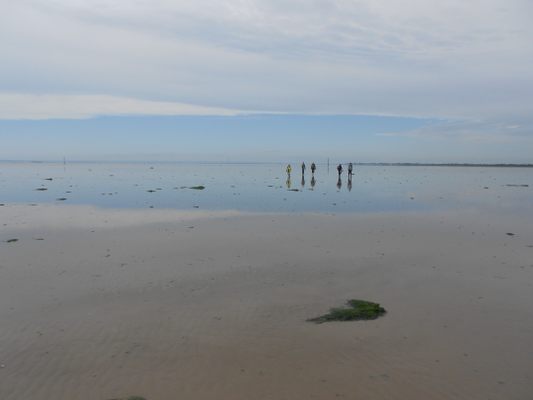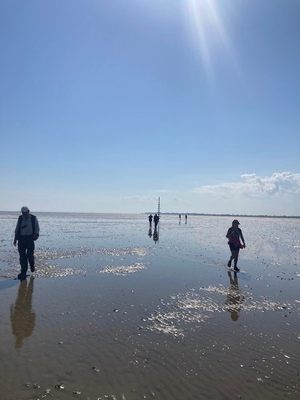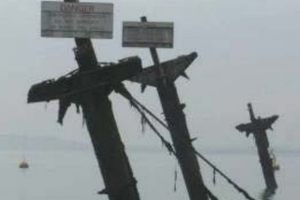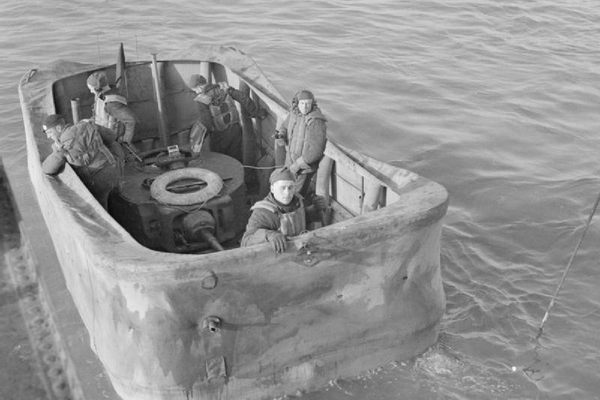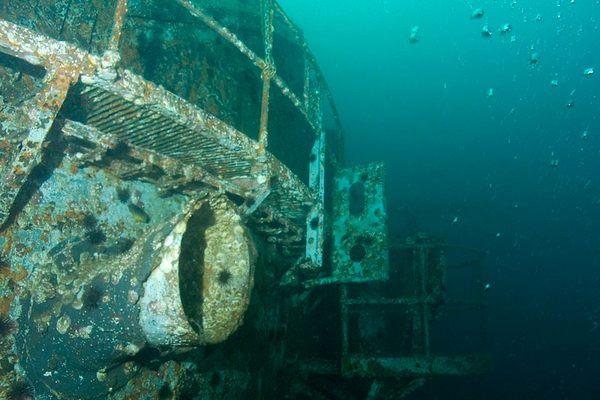About
The Broomway is a centuries-old footpath which begins as a rickety causeway at Wakering Stairs and, at high tide, abruptly disappears into the sea. When the tide is out, the path descends into an impossibly sticky tidal mud. Known locally as the Black Grounds, it is the sort you really don't want to get stuck in.
Beyond the Black Grounds, the path, one of the most perilous in Britain, wends its way northeast, running parallel to the coast for a few miles before curving back to land at Foulness Island. Before modern roads this was the only access to the isolated island and not for the faint of heart.
The Broomway is exceptionally dangerous. The tide comes in quicker than you expect, and drowning rates are high here—the Foulness burial register records 66 dead bodies recovered from the sands since 1600, and that's only a fraction of those who have lost their lives to the tide.
Even when the surface is walkable, at low tide, it's not to be completely trusted, riddled with patches of sticky mud and quicksand and surrounded by old mines that may explode if touched. With sand in all directions, it can be hard to stay on track in the misty weather, but even in perfect conditions it's not hard to become disorientated and lose the path.
For this reason, the pathway used to be defined by bundles of broomsticks tied to poles which would guide those intrepid enough to wander out into the mist—this is where the name comes from, though it's also been dubbed "Doomway" due to the deadly history.
There is evidence the path has been around since 1419 and was the only access to Foulness Island before a road bridge was built in 1932. People used to cross the Broomway in wagons, with the waves splashing against the wooden wheels. Now the trail is largely invisible but for the causeway portals at either end.
Still, anyone wishing to traverse the path can do so—you can even drive a vehicle across it—but you do so at considerable risk. The sensible will take one of the few guided tours which are run each year and coincide with the tide tables and the mercies of the weather. Foulness Island and the area between Southend and Wakering Stairs is Ministry of Defence land, so visitors can only pass through at defined times on weekends. Sling your wellies over your shoulder and walk barefoot as your senses become numbed by the silence and isolation on the Broomway. Once out there you will be simply enchanted.
Related Tags
Know Before You Go
You will need to arrange any visit carefully. Best advice is to call Qinetiq (who manage the MOD site) at 01702 383211 (7:30-4:30 Monday-Thursday, 7:30-12:30 Friday). Tours book up early so be advised to plan ahead. The day I walked it there were people from many different far flung places who had been waiting for ages for the opportunity. Allow 3 hours to walk there and back. MOD/Qinetiq's advice: The Broomway is not maintained or waymarked. It is wet mud, not sand. The route is not always accessible for the amount of time that the tide tables suggest. The intertidal time can be shortened by an onshore wind or the tide height. Avoid the sands on the seaward side, even though they seem firmer, because of a) potential for unexploded ordnance, and b) unmarked soft sand shell craters (created by explosions). Take a compass and mobile phone. You should ensure that you have sufficient time to return to Wakering Stairs via the Broomway, (as there is no other public right of way off the island). HM Coastguard (01255 675518)—for guidance on tide times.
Community Contributors
Added By
Published
March 28, 2017
